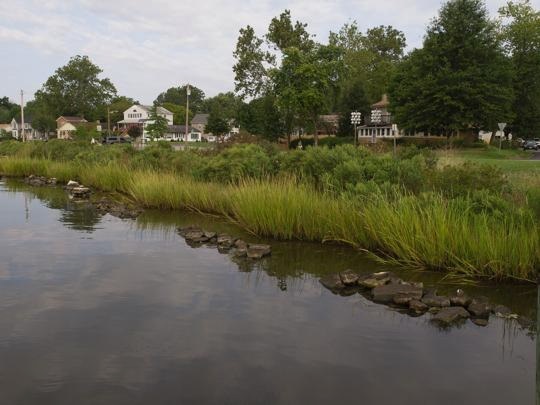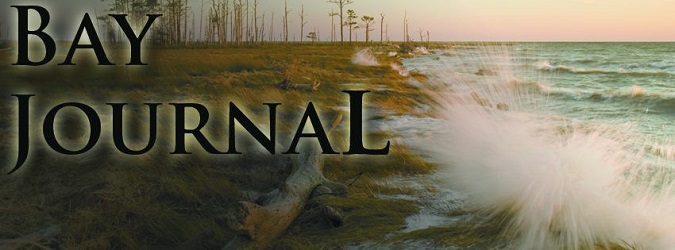 As winter approaches, we at the Alliance for the Chesapeake Bay are looking forward to receiving our yearly seasonal guests along the Atlantic Flyway: migratory birds. These birds rely heavily on our coastal ecosystems to sustain them during their journey south to warmer temperatures, thanks to our shorelines’ valuable habitat.
As winter approaches, we at the Alliance for the Chesapeake Bay are looking forward to receiving our yearly seasonal guests along the Atlantic Flyway: migratory birds. These birds rely heavily on our coastal ecosystems to sustain them during their journey south to warmer temperatures, thanks to our shorelines’ valuable habitat.
While only here for what appears to be a short time, migratory birds play an important role in the Bay’s ecosystem. Coastal habitats rely on predation by waterbirds to help maintain stability and diversity by “weeding out” invasive species like phragmites, thereby significantly increasing ecosystem productivity.
But threats to shoreline habitat, such as erosion and sea level rise, are quite visible throughout the Bay watershed, and while “shoreline hardening” via the installation of bulkheads and stone revetments was once seen as the solution to erosion, they are often unable to preserve ecosystem integrity.
Since 2008, Maryland has pushed the creation of “living” or “softened” shorelines to combat erosion while also protecting these ecosystems from degradation.
The main difference between the two techniques is that living shoreline designs focus on long-term impacts by accounting for the ecosystem services that shorelines naturally provide, while bulkheads and shoreline hardening are geared more toward the protection of property. Studies have shown that creating hard physical barriers to deflect wave energy disrupts the natural hydrologic regime and results in increased shoreline erosion with associated issues including: suspended sediments obstructing water clarity, loss of vegetation and habitat and decreased food availability for migrating birds.
In contrast, living shorelines are distinguished by the way that they are carefully designed to focus both as protection from sea level rise and the preservation and expansion of the habitat. Living shorelines vary in type and many involve introducing changes, such as planting vegetation to anchor sediment and adding hardened structures off-shore, called breakwaters, to decrease incoming wave energy while maintaining the integrity of the shoreline. These efforts might seem simple but, if installed with proper planning and consideration, they can have significant positive ecosystem impacts such as the expansion of wetland habitats and shoreline accretion.
The Alliance believes that taking these steps to secure our coastal habitats in the long term is a way to contribute to both environmental and community resiliency. Our Maryland projects team has been working closely with the Cape St. Claire community in Annapolis to restore a stretch of shoreline to be enjoyed by residents — both human and avian. The significance of the migratory bird population on our coasts is re-enforced in this project, as the U.S. Army Corp of Engineers has restricted the time of year for its construction to make sure the habitat is accessible during the winter. The project area, located near the confluence of the Magothy River and Chesapeake Bay, has been identified as an important nesting and foraging location for wintering birds, including nine species that are classified as being of greater conservation need in Maryland. It is anticipated that the shoreline restoration will provide more vegetation for foraging and nesting as well as an adaptive and resilient coastal area for birds and other organisms.
Laura Todd, the Green Infrastructure Projects coordinator at the Alliance, said, “It is our hope to educate coastal communities about the benefits of living shorelines and to protect existing crucial coastal habitats along with restoring fisheries and habitats that had been degraded by prior shoreline hardening.”
For communities like Cape St. Claire, living shorelines provide a way for residents to connect with each other and enrich their environment in a meaningful way. “These coastal ecosystems are vital to the health and resiliency of the Bay and its watershed. Communities like Cape St. Claire have shown great initiative in protecting such an important resource for their residents,” Todd said.
Coastal wetlands created by living shorelines can provide direct protection for the greater ecosystem by absorbing floodwaters and reducing erosion through slowing the surface flow of the water. They also improve water quality by acting as a natural filter. These areas tend to be highly productive and rich in habitat complexity, creating an ideal location for safe nursery and feeding sites for fish and migratory birds.
In the face of rising sea level, wetlands give shorelines the opportunity to migrate upland instead of disappearing. Living shorelines, created with these ecosystem functions benefits in mind, make a highly resilient choice for protecting and maintaining our greater coastal ecosystems, both now and in the future.
For a guide on living shorelines, visit cbf.org/document-library/cbf-publications-brochures-articles/Living_Shorelines011a.pdf.
Mel Throckmorton is a member of the Chesapeake Conservation Corps working with the Alliance on Maryland-based projects.
The views expressed by opinion columnists are not necessarily those of the Bay Journal.

